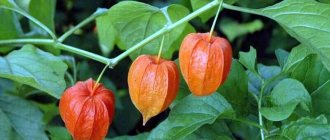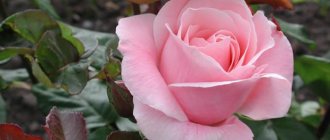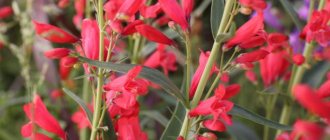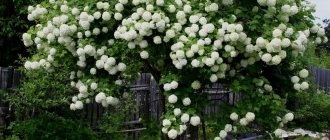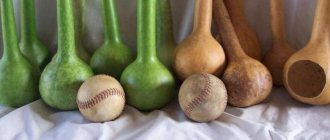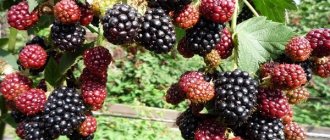Vegetable growing » Pumpkin
0
828
Article rating
Kira Stoletova
Butternut squash is especially popular among gardeners. It is distinguished from other types by its more valuable composition and sweet taste. This is a dietary, low-calorie product that is even used for baby food. It has a general strengthening effect on the body. Different parts of the plant are eaten.
The most popular varieties of butternut squash
What is butternut squash?
The plant belongs to the Pumpkin family. Many people claim that butternut squash has the best taste. The vegetable has juicy fibrous pulp. It is characterized by a light orange hue and a sweet taste. The top of the fruit is covered with a thin peel that can be easily peeled off with a knife. .
The shape of the plant can be different - round, ribbed, oval. Depending on the variety, the culture may have different shades. The plant is native to Mexico. Its fruits can be very large. The weight of each of them can reach 100 kilograms.
Harvest and storage
The exact timing of harvest depends on the variety of butternut squash, but in general it is better not to delay this process. Since this crop is quite heat-loving, it is necessary to remove the fruits before the first frost. Even the slightest cold snap can almost completely destroy the harvest of some varieties that are especially sensitive to heat.
When collecting ripened fruits, the following rules are followed:
- the pumpkin is not picked by hand, but cut with a knife or pruning shears;
- It is advisable to carry out collection in dry, cloudless weather;
- When cutting fruits, you should not touch the peel, as an infection can penetrate through the cut and subsequently spread to other pumpkins.
The harvested crop is placed in a room at room temperature, but it is better to move the fruit to the cellar, where it is dark and cool. The optimal temperature for long-term storage is 12°C.
Advice! Butternut squash fruits can be picked unripe; they ripen well indoors.
Beneficial features
Nutmeg pumpkin varieties have many beneficial properties. These include the following:
- the fruits have no cholesterol;
- the vegetable is low in calories;
- helps remove harmful elements from the body;
- has a diuretic effect;
- strengthens the immune system;
- improves the functioning of the organ of vision due to the content of carotene;
- normalizes the functions of the heart and blood vessels due to the presence of potassium.
Decorative types
The main purpose of decorative greenfinches is to decorate the garden area.
These plants are part of landscape design and are used to decorate gazebos, fencing and fences.
The fruits are usually unusual in size and shape, and the bark is often covered with patterns of stripes, hatching and speckling. The harvest is harvested before it is fully ripe and dried to later be used as decorative elements.
Apple goose is the most popular variety. It is not used for food purposes.
Popular varieties of butternut squash
This crop has many varieties. They differ in size, shape, purpose, composition.
Augustine
This is a high-yielding variety. Pumpkin ripens 105 days after planting. It has a cylindrical shape and a green tint. Pumpkin can be eaten fresh or cooked.
Arabatskaya
The plant has a medium-late ripening period. The fruits reach 8 kilograms. They are covered with a light orange peel. At the same time, the pulp is dense and juicy. Pumpkin can be stored for 4 months.
Peanut butter
This early ripening variety is the work of German breeders. The fruits are pear-shaped and reach 4 kilograms. The skin is creamy in color, and inside there is bright and juicy pulp.
Barbara F1
This is the highest yielding muscat variety. The plant is resistant to diseases. Pumpkin has a hard skin. She ripens quite early. The harvest will be harvested in 85 days.
Bylinka
It is a flat pumpkin with a gray skin. As it matures, it acquires a lighter shade. The culture is characterized by sweet orange pulp.
Vita
The culture is considered mid-season. The growing season is 115 days. The peel has a gray tint. The fruit weighs up to 4.5 kilograms. The pulp is considered quite juicy and has a pleasant aroma.
Vitamin
This is a fairly late variety. The fruits can be consumed after 140 days. They are distinguished by their elongated oval shape and thin skin. Inside there is orange pulp with a sweetish taste.
Guitar
The variety is considered mid-season. The harvest can be harvested after 110-120 days. The fruits are distinguished by their elongated shape and rich orange pulp. With proper care, a pumpkin can reach 8 kilograms.
Pearl
This variety belongs to the mid-late variety. It is distinguished by its orange peel and cylindrical shape. Inside there is juicy sweet orange pulp. The vegetative period is 110 days.
See also
Characteristics and description of Matilda pumpkin, cultivation and care
Read
golden pear
This pumpkin is characterized by bright orange fruits. They are shaped like a drop. The plant matures within 95 days. Pumpkin is characterized by orange flesh with a chestnut flavor. It has small fruits weighing about 2 kilograms.
Spanish guitar
This fruit has an unusual shape that looks like a guitar. It can reach 1 meter in length. The weight of the pumpkin is 5-10 kilograms. This variety is characterized by yellow-green skin and orange flesh.
Marina from Chioggia
This variety is characterized by a flattened crust and a rounded shape. The variety is considered medium late. Its growing season is 130 days. The pumpkin reaches large sizes and can weigh 12 kilograms.
Honey Princess
This is a mid-season plant that matures 115 days after planting. The crop turns out to be quite powerful, so it is necessary to plant the bushes at a great distance. The fruits reach 4 kilograms.
Marble
This is a mid-season variety that ripens in 130 days. The fruits have a round and slightly flattened shape. The plant has marbled green and gray colors. Inside there is a sweet orange pulp.
Muscat de Provence
This is a medium-late variety that ripens in 120 days. It is characterized by a thick peel, which ensures a long shelf life. The fruits can reach 8-10 kilograms and contain rich orange pulp.
Muscat
This plant is characterized by beautiful orange fruits. They have an oblong shape and ripen in 140-150 days. The pulp is orange in color and contains many vitamins.
New
The culture has an average ripening period. The growing season lasts 115 days. The fruits are cylindrical in shape with slight thickening. The weight of the vegetable reaches 6-7 kilograms.
Nut butter (Butternut)
This variety is considered early ripening. Its growing season is 90 days. The fruits have an oblong shape. Their peculiarity is the formation of seeds in the lower part. This increases the volume of the pulp.
Palav Kadu
This variety is considered late ripening. Its growing season lasts 150 days. Therefore, the plant is propagated using seedlings. The fruits have a round shape and a ribbed surface.
Prikubanskaya
This plant produces pear-shaped fruits and is considered a mid-late bloomer. It takes 115 to 140 days to mature. The average fruit weight is 2.5 kilograms. They are characterized by thin skin.
Provençal
The fruits are characterized by a round, slightly flattened shape. Pumpkin has a thin, ribbed orange skin. The growing season is 120 days. The fruits reach 8 kilograms.
Trombone
This pumpkin has an original twisted shape and an impressive length. The pulp has a rich orange hue and good taste. Fruits can be stored for more than 1 year. It takes 110 days for them to mature.
Hokkaido
This variety is considered early ripening. It has different shapes - round, flattened, pear-shaped. The fruits weigh 0.7-2.5 kilograms. The flesh may be yellow or almost red.
Tsukatnaya
The vegetable has wide and slightly flattened fruits. The culture belongs to the mid-late varieties. The growing season reaches 140 days. The weight of the fruit is 5 kilograms.
Miracle Yudo
This unique vegetable can be eaten raw. It contains a lot of sugar and carotene. The pumpkin has an oval shape. In weight it reaches 6-8 kilograms. The peel has an orange tint and an interesting mesh pattern.
As a result
Butternut squash is a vegetable that requires no more effort from the gardener than other vegetables. At the same time, the ripe fruits will delight you with their taste and improve your health!
Butternut squash is the most delicious, but at the same time, it requires a special approach.
Love at first sight
As long as I can remember, pumpkins have always grown in the garden. With great pleasure, every summer I admire the growth of these pot-bellied giants and look forward to a fruitful autumn.
Most often, of course, we plant ordinary and large-fruited pumpkins. I also really love climbing decorative pumpkins. But one day in a seed store, among all the variety of varieties of this crop, I saw nutmeg pumpkin seeds. I read in the description that it is the most delicious, and I decided to try growing it myself. And for several years now, butternut squash has been my favorite!
I want to share with you my secrets of growing this wonderful plant.
Peculiarities
Butternut squash is not only very tasty, it is also the most heat-loving of all types. Therefore, it requires a special approach - it must be grown through seedlings, since it has a long period of development and maturation. But all the effort spent in growing it pays off when I admire the harvest of “sunny” fruits and prepare delicious, aromatic desserts and pies.
Butternut squash fruits come in various shapes - round or oval, often curved. The color of the skin is yellow or brownish.
The dense, delicate orange pulp has a special taste and smell. The weight of the fruits can also vary - they often reach quite impressive sizes.
Sowing seeds
I sow my butternut squash seeds in mid-April - 2 seeds per pot. I immediately take large seedling containers - about 10 cm in diameter. Seeds germinate quickly; after a while I remove one sprout - I leave the strongest and largest one.
My seedlings stand on the brightest southern window, and after a while I transfer them to the glassed-in loggia. The main thing here is to water the seedlings on time, because on the south side on hot days the soil dries out quickly.
Preparing the bed
I always choose a place for pumpkins that is open and sunny. I make the bed slightly raised. I add last year's compost to the soil - all pumpkins love fertile soil.
On the 20th of May, on a cloudy day, I plant the seedlings in the ground. By this time, 4 true leaves already appear on the seedlings.
Landing in the ground
I make holes in the garden bed at a distance of 70-80 cm from each other - the pumpkin needs a lot of space to grow. I carefully transfer the seedlings from the pots into the ground, water them, compact the soil around the plants and sprinkle them with dry soil.
In case of return frosts, I cover the bed with covering material.
Care
My pumpkins are growing quickly. At the beginning of May I remove the covering material.
At first I water the plants regularly (pumpkin loves watering), but when large leaves begin to cover the entire space of the bed, moisture remains under them for a long time, so I reduce watering. Weeds hardly grow under large leaves.
Twice a season I feed my pumpkins with a fermented infusion of green fertilizers.
Harvest
Soon the pumpkin begins to bloom, and small pumpkins appear on the vines. I read a long time ago that you need to pinch the nutmeg pumpkin - now I pinch the stem after 2-3 ovaries, 50 cm after the last one. Most fruits still do not have time to ripen.
Around mid-August I cover the bed again - the nights are already becoming cool. And at the beginning of September I am already harvesting.
You need to harvest the nutmeg pumpkin fruits with the “tails”, being careful not to damage the delicate skin.
Storage
Butternut squash requires ripening (in our climatic conditions, it often does not have time to fully ripen). I store my pumpkin in my room, under the bed. When ripened, its skin hardens and becomes colored, and the flesh also becomes brighter and orange.
I have never tried a tastier and more tender pumpkin than nutmeg. Try it too!
- Author: Maria Sukhorukikh
Rate this article:
- 5
- 4
- 3
- 2
- 1
(0 votes, average: 0 out of 5)
Share with your friends!
Features of growing nutmeg pumpkin
To get a strong plant, you need to take into account the main features of its cultivation.
Choice of time and place
It is recommended to plant pumpkin in an elevated and well-lit place. The plant needs spacious beds. It is best to grow the crop in seedlings. To do this, the seeds are planted in separate containers at the end of April. They are transferred to open ground in early June.
Preparation of planting material
To prepare the seeds, you need to do the following:
- soak for several hours in hot water;
- wrap in damp cloth;
- place in the refrigerator - on the bottom shelf.
Preparing the site for planting
The garden bed should be prepared in the fall. It is recommended to dig it well and add superphosphate and rotted manure. With the arrival of spring, these manipulations should be repeated. It is recommended to use ammonium nitrate.
Disembarkation process
Planting pumpkins in open ground should be done in late May or early June. It is important that the ground temperature reaches 12 degrees.
The distance between seedlings should be at least 0.6 meters. However, taking into account the variety, it may be more.
The depth of the hole should be 10 centimeters. Before planting pumpkins, it is recommended to water each of them. Then the plants can be planted.
See also
Description of Butternut pumpkin, features of cultivation and care
Read
How to properly care for the crop?
In order for the pumpkin to develop well, it needs to be provided with high-quality and complete care.
Watering rules and necessary fertilizers
Before the ovaries form, the pumpkin must be watered once a week. Then they switch to another regimen - once every 1-2 weeks. The water should be warm and settled.
There is a risk of spreading disease when using cold liquid. It is better to avoid watering a couple of weeks before harvesting.
Weeding and loosening the soil
It is recommended to loosen the soil after each watering. Between the rows this should be done to a greater depth, near plants - to a shallower one. Timely removal of weeds is of no small importance. This is especially important before the pumpkin begins to actively develop.
Pollination
In bad weather there are usually no insects to pollinate plants. In such a situation, the procedure is carried out on its own. It is recommended to do this in the morning in cool weather. To do this, you need to take a male flower, remove the leaves and touch the stigma of the female flower with the stamen. You can transfer pollen with a soft brush.
Formation of lashes
Pumpkin forms a large number of ovaries, but is not able to guarantee them adequate nutrition. To get a good harvest, it is enough to leave 2-3 fruits. The formation process also implies compliance with the following rules:
- the stems need to be pinched - this is done 0.5 meters from the ovary;
- get rid of excess shoots;
- straighten the lashes, sprinkle them with soil.
This manipulation will help the plant form new roots. Due to this, it will receive additional nutrition.
Diseases, pests and methods of protection against them
Pumpkin may face dangerous diseases and attacks from harmful insects. In such a situation, appropriate measures must be taken immediately.
Diseases
Pumpkin rarely encounters diseases because it has excellent immunity. However, sometimes diseases still develop.
Bacteriosis
When infected, dark green spots appear on the leaves. On the reverse side you can see an oily substance. After some time, the leaves dry out. The disease also leads to deformation of the fruit. Copper sulfate and Bordeaux mixture help to cope with bacteriosis.
Powdery mildew
In this case, the leaves become covered with white spots. Over time, a white coating appears on them. The disease leads to deformation of the fruit and drying out of the crop. Sodium phosphate and colloidal sulfur help to cope with the disease.
Root rot
First, the root system suffers. It turns brown and cracks. Then the leaves turn yellow and the pumpkin stops developing. The drugs Fundazol and Previkur are used for treatment. You can also sprinkle the plant with wood ash.
Anthracnose
As the disease develops, the leaves become covered with brown spots. After some time they crumble and holes appear. As a result, the foliage dries out. Bordeaux mixture helps to cope with the disease. Copper oxychloride can also be used.
Yellow mosaic
In this case, the leaves become covered with small yellow spots. The plant is stunted in growth. Farmayod-3 helps to cope with the problem.
Pests
Sometimes the pumpkin faces attacks from pests. It is important to identify and neutralize them in time.
Spider mite
This parasite sucks all the juices out of the crop. Mites can be seen on the underside of leaves. Karbofos will help you cope with it.
melon aphid
Colonies of pests infect the lower part of the leaves and feed on their sap. As a result, the culture dries out. Karbofos helps to cope with the problem.
Slugs
These pests eat young shoots. To combat them, ash and garlic infusion are used. The drug Groza is also suitable.
Wireworm
The pest is dangerous for the roots of young plants. It is recommended to collect it mechanically using bait. In difficult cases, Bazudin is used.

